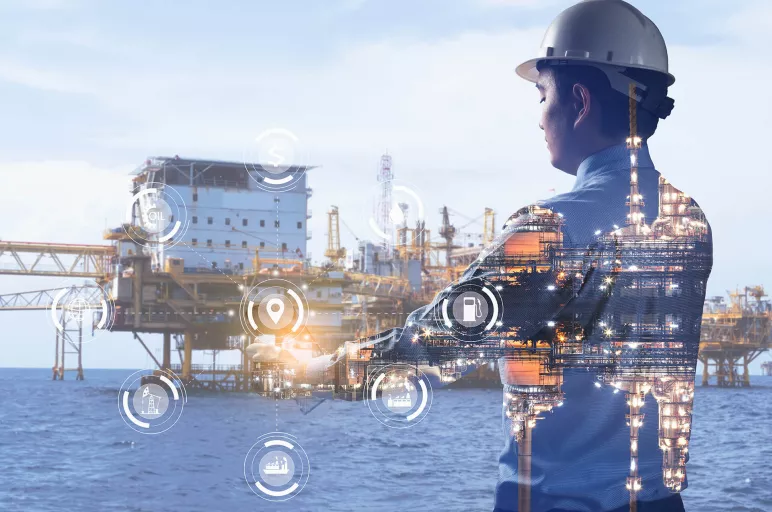
The Growing Importance of AI in the Oil and Gas Industry
April 14, 2020 | Energy & Utilities
The oil and gas industry faces many challenges in its operational processes, ranging from unconnected environments to frequent downtime and maintenance issues for its various machines. In comparison to other sectors, oil and gas has made fewer investments in incorporating artificial intelligence and machine learning technologies in its processes. However, oil and gas companies have started on the path of AI after witnessing how the technology has helped cut operational costs and enhance efficiencies across other industries.
Artificial intelligence is a diverse field, but within the oil and gas industry there are two primary applications of the technology: machine learning and data science. Machine learning is transforming the way in which oil and gas is discovered and developed, allowing companies to gather large volumes of information in real time and translate data sets into actionable insights. The offshore oil and gas industry can use AI in data science to make the complex data used for oil and gas exploration and production more accessible, which allows companies to discover new exploration opportunities or make more use out of existing infrastructures
The Current Scenario
Oil and gas companies are using AI alongside their existing digital infrastructure to increase the efficiency and productivity of exploration operations. Using ML and predictive analytics is helping industry insiders improve operations and the disruptive technology can cut costs by up to $50 billion in upstream oil and gas activities alone.
In Nov. 2019, Microsoft formed a strategic partnership with oil and gas company Baker Hughes and AI developer C3.ai to bring enterprise AI technology to the energy industry via its Azure cloud computing platform. This alliance would allow customers to streamline the adoption of AI technology that is designed to address issues like inventory, energy management, predictive maintenance and equipment reliability. Similarly, in Jan. 2019, BP invested $5 million in the Houston-based technology start-up Belmont Technology, which will enable it to tap into a cloud-based ML platform dubbed “Sandy”. BP will feed in data to the platform regarding geology, geophysics, reservoir and historic project information, which Sandy will then link together to identify new connections and workflows.
In Feb. 2018, ExxonMobil announced plans to partner with MIT to design AI robots for ocean exploration, aimed at improving its natural oil seep detection capabilities. Meanwhile, Total announced plans to use artificial intelligence to screen geological data to help identify new prospects and shorten the time to acquire licenses, drill and make discoveries.
The Future
AI systems can automate and optimize the initial stages of the exploration and production lifecycle, including seismology, geology, drilling, petrophysics, reservoir and production. They have the potential to reduce risks, enhance productivity and minimize operational costs. Precise targeting and the ability to identify drilling locations can help to maximize the ROI on any drilling activity. The demand for AI in the upstream oil and gas market is set to grow in the next five years at a rate of 12.66% to reach $2.8 billion by 2022, though these assessments are from before the COVID-19 disruption.
Going forward, the impact of ML and AI has already been realized in the industry. Early adopters are gaining a competitive advantage in protecting their assets thanks to their head-start and investors are increasingly getting behind digitization. Sensor-rich oil fields are already proving their worth by providing big-data engines with the fuel they need to analyze. Field workers are always connected by the mobile devices that have infiltrated our daily lives. By integrating these technologies, the oilfield is primed for a connectivity revolution and AI is the smart icing on that data cake.
Turn ideas into action. Talk to GEP.
GEP helps enterprise procurement and supply chain teams at hundreds of Fortune 500 and Global 2000 companies rapidly achieve more efficient, more effective operations, with greater reach, improved performance, and increased impact. To learn more about how we can help you, contact us today.

Santosh Nair
Vice President, Technology
Santosh has over 12 years of experience managing large-scale procurement transformation engagements for leading Fortune 500 companies.
At GEP, he’s responsible for developing new products and services by incorporating complex aspects of mobile interfaces, social media, cloud computing and big data.



